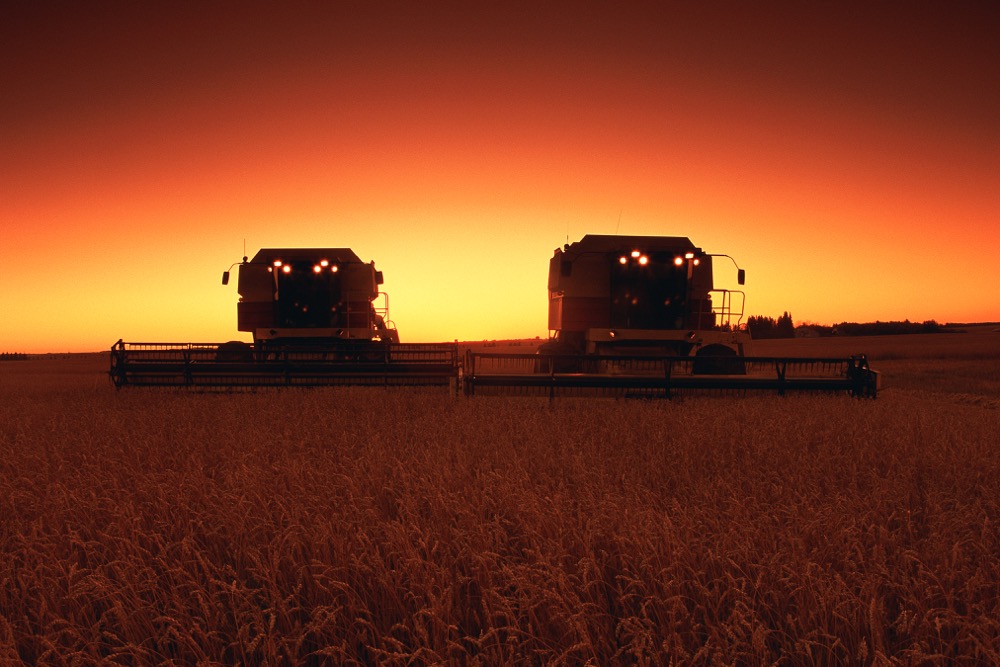I remember one Christmas Eve walking in minus 38, and then a week later saw the mercury hit plus 46 on New Year’s Day. Such are the outcomes of a 14-hour plane journey between Canada and Australia. But despite the different weather, I will tell anyone who will listen that Australia and Canada have much in common. And one such area is growing and exporting grain.
But there are differences too. Some are well known, like the fact that most Australian grain is grown closer to the ports from which it will be shipped. By rail and road, their crop gets to port quicker.
There is also a difference in the degree to which farmers use rail. In Canada, Prairie farmers rely on their rail system, while in Australia half of the grain moves by road from farm gate to port terminals. Canadian port terminals aren’t designed to receive grain by truck even if Canadians were willing to move grain by road.
Read Also

It doesn’t have to be the end for your farm
Options for farmers without successors to pass on the farm.
In the long-term, however, the differences in our export strategies, as discussed in this and subsequent columns, may be much greater.
A sign of what’s to come
As in Argentina and Ukraine, 2021 has been a successful year in Australia for grain exports.
For Canada, the lesson of 2021 seems to be that the Australian industry put itself in a position to take advantage of favourable circumstances that emerged.
There are appears to be a healthy focus on tapping into new markets, and expanding others. There is also a closer focus on the types and quality of wheat that are in demand across world markets. Apart from some hiccups in Western Australia and a degree of transport disruption, 2021 will be remembered as a great year for Australian grain exports.
For Canadian grain farmers and their representative bodies, getting a better understanding of developments in the southern hemisphere may be just as important as keeping tabs on the growth and development of the powerhouse Black Sea region.
Growing Australia’s market share
Recently the Australian government announced seven grants under the Agricultural Trade and Market Access Co-operation (ATMAC) component of the Australian government’s Agri-Business Expansion Initiative (ABEI). Grants like those awarded under ABEI help Australia’s agriculture, forestry and fisheries industries explore new export opportunities in overseas markets.
Grains Australia Limited was awarded a grant to develop market diversification plans and pursue strategic relationship building for Australian grains, oilseeds and pulses. Target markets include India, Southeast Asia (existing) and Africa (emerging).
Bumper season
This year Canada has experienced its agricultural challenges. At the same time Australia has bounced back from drought. Australian government economists expect the local agriculture industry will grow to $73 billion worth of produce this financial year.
It will be the first time farmers have broken through the $70 billion mark, and a huge bounce back from the harsh Aussie drought in 2018. Good weather across most of Australia, combined with drought elsewhere in the world, will boost returns for grain growers who are now expected to export around $30 billion worth of the southern winter crop — an estimated increase of 17 per cent.
All this in a year where there was a difficulty accessing farm workers, high international freight costs, new Chinese tariffs on barley and wine, and a challenging mouse plague.
Industry profile
Australian grain production is dominated by winter cereals, produced across a wide area in a number of distinct zones with differing climate, soil and farming systems. Recently, strong export market demand together with access to improved varieties and farming systems has driven the expansion in other areas such as pulse production, particularly chickpeas in northern Australia and lentils in southern Australia. Despite trade actions from China, barley producers in Australia have also done well, shifting some of their export this year to Japan.
GrainCorp and CBH – the private company and the co-operative
GrainCorp is Australia’s biggest bulk handler and operates seven export terminals, as well as a vast bulk-handling network in Queensland, New South Wales and Victoria. Graincorp controls nearly all the port capacity for bulk grain export from Queensland. Graincorp was established long ago as NSW’s government agency, until it was privatized by a conservative state government in 1992.
In Western Australia, the bulk handling division of CBH owns and controls almost all the state’s warehouse storage, grain freight and port loading infrastructure, while its trading division marketed 40 per cent of all grain exported.
CBH commenced in 1933 and currently has around 3,700 grain-growing members. That is, CBH plays a vital role in the Western Australian wheatbelt. This year, to enhance its export program CBH added to its rail fleet with additional locomotives and cars that allow it to ship to four WA ports.
CBH also inked a new transport deal with Aurizon, a private company that was previously the government railway company in the state of Queensland.
Ownership and control of grain export infrastructure is more diverse in Victoria and NSW, where substantial new port facilities have been developed, but grain handling is still largely controlled by GrainCorp. In these states the company controls well over 50 per cent of the port and warehouse storage capacity and is also the largest marketer of grain.
A closer look at canola
Australian canola has grown from a modest 100,000 hectares in the early 1990s — representing a fraction of total winter cropping area — to an average 2.5 million hectares and almost 12 per cent of winter cropping area this past decade, according to a report by Rabobank. Despite heavy Chinese tariffs Australian canola has been something of a success story in 2021.
Where has Australian grain been exported to?
Different crops are being exported to different markets. The Australian Bureau of Statistics export data suggests that almost 3 million tonnes of canola will be exported this financial year. Of that, Europe is expected to take the major share. Most canola exports are bound for Europe due to low production in the EU last year. Australia has been able to capitalize on this supply gap while also diversifying its export destinations to eastern Europe, and the UAE.
Barley exports are already exceeding estimates with 7 million tonnes. Approximately half of this is destined for Saudi Arabia. Southeast Asia has also been an important market with Australian barley exports up 92 per cent year-on-year into this region. And wheat exports to Thailand are reportedly up 700 per cent.
A focus on Western Australia – an almost but not quite bumper season
Western Australian has increasingly capitalised on its geographic location, and its early adoption of GM crops is resulting in productivity increases. WA’s grain exports usually represent 40 per cent of Australia’s total grain exports and are sold broadly.
WA is reportedly the world’s major supplier of wheat for Japanese and Korean udon noodles. WA is also a major producer of malting and feed barley. In previous years it has been the top supplier of malting barley to China and Shochu barley to Japan.
After high hopes, some extensive frost damage in Western Australia’s wheatbelt reduced yields at the last minute. While the worst of the frost damage was in the Merredin region, damage across the state was widespread. Although barley and canola crops were frost-affected, wheat recovered due to subsequent mild temperatures. And there are future plans to introduce more frost-resistant crops in the west.
Getting product out of WA was also affected by a labour shortage and congestion at WA main ports. Iron ore is also exported through many of the same ports as grains and is a major industry in the state. On top of that, unexpected labour relations issues at WA ports have put a squeeze on agricultural exports, a dispute that appears to be escalating.















